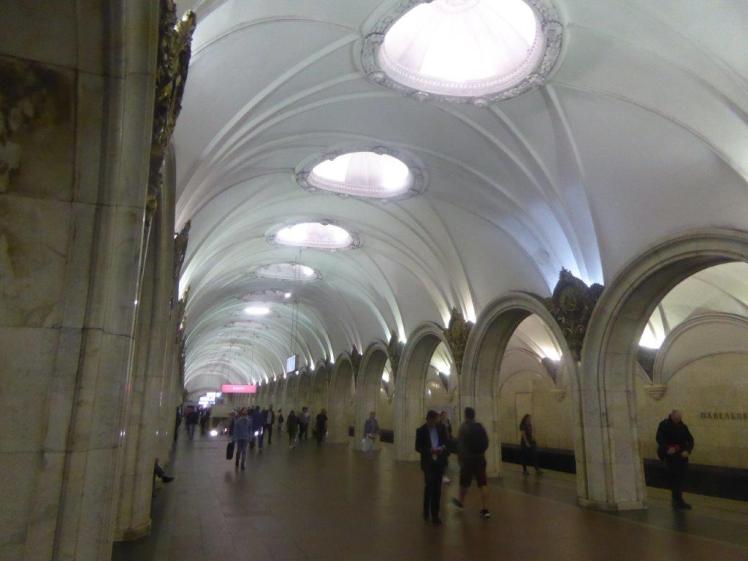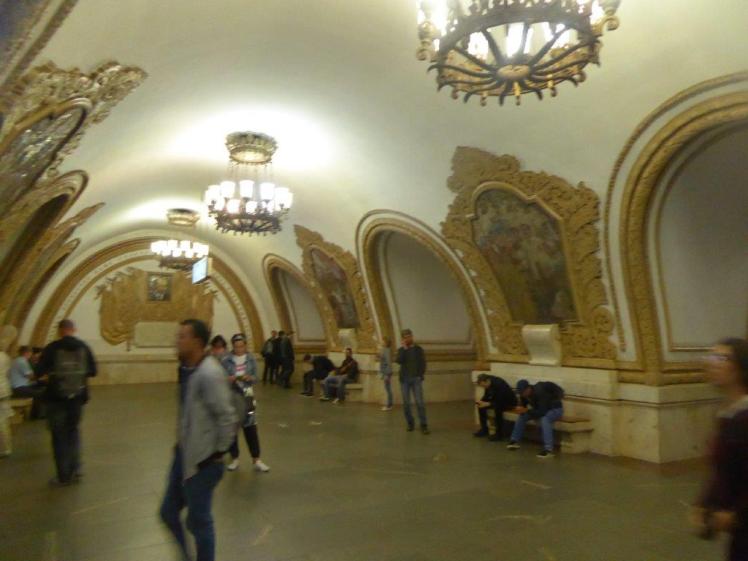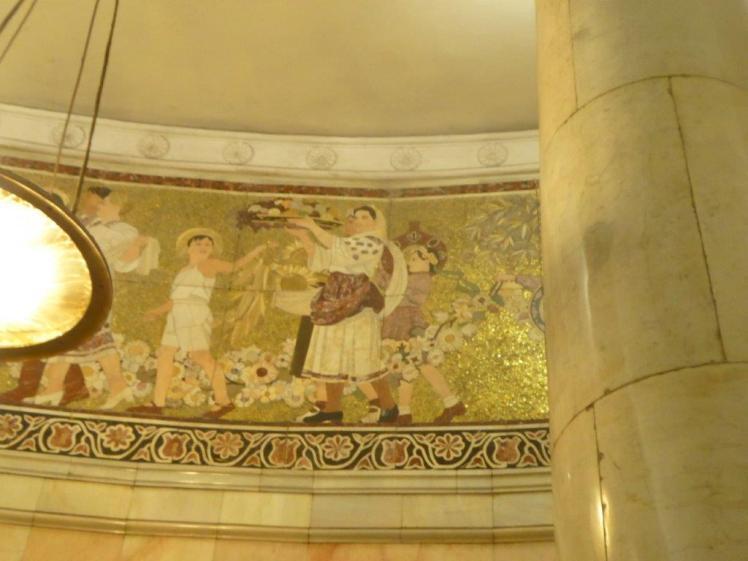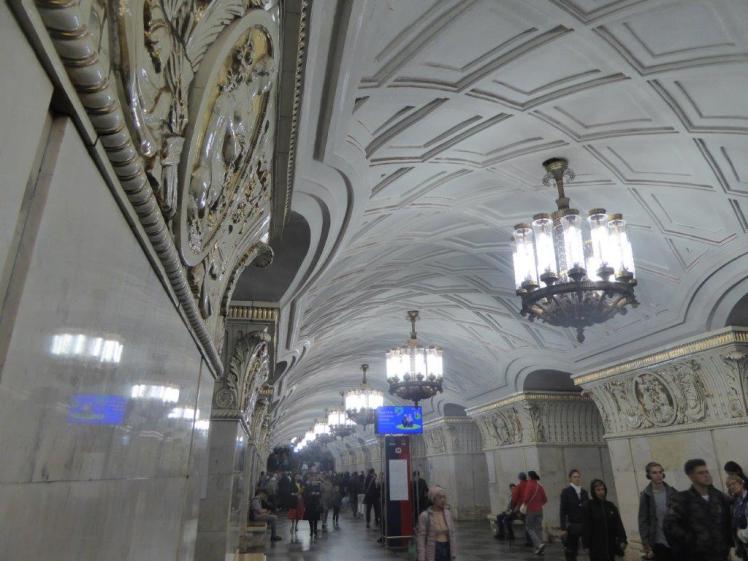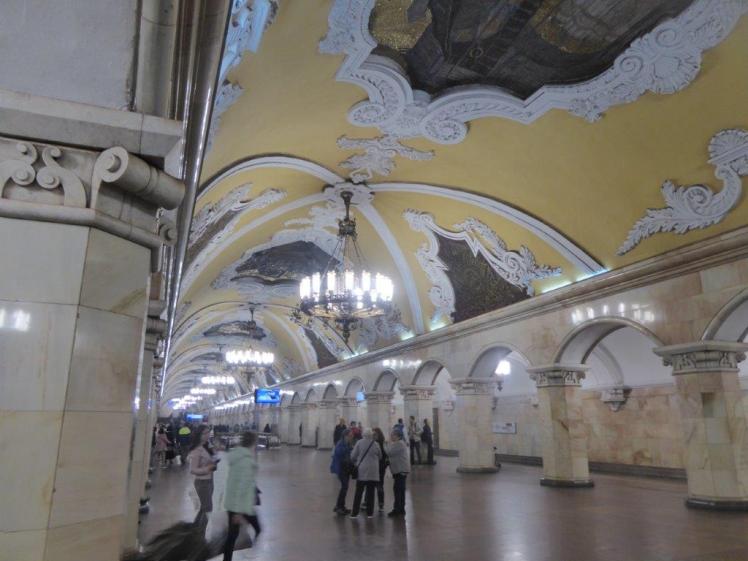Last week I told you that I went to Russia and today we start the blogs in earnest. I currently have plans for 15-20 of them over the next four months – I did quite a lot while I was out there.
So, day one, city one – welcome to Moscow!
I arrived late afternoon on the Aeroexpress train which came into Paveletskaya station which is very conveniently the nearest metro station to my hotel. I wasn’t exactly nervous about the metro – navigating urban railways is in my blood but it looked like quite a complex system and it was going to be labelled in Cyrillic. I do read it but I read it like a Reception child, slowly and spelling out every letter until it forms a word I recognise, and since my Russian is virtually non-existent, I’m probably not going to recognise that word. I had a map of the metro in my Little Book of Russia – a little passport-sized book I made myself as a kind of notebook-guidebook – and I’d marked notable stations with a yellow highlighter so I was as prepared as I could be…
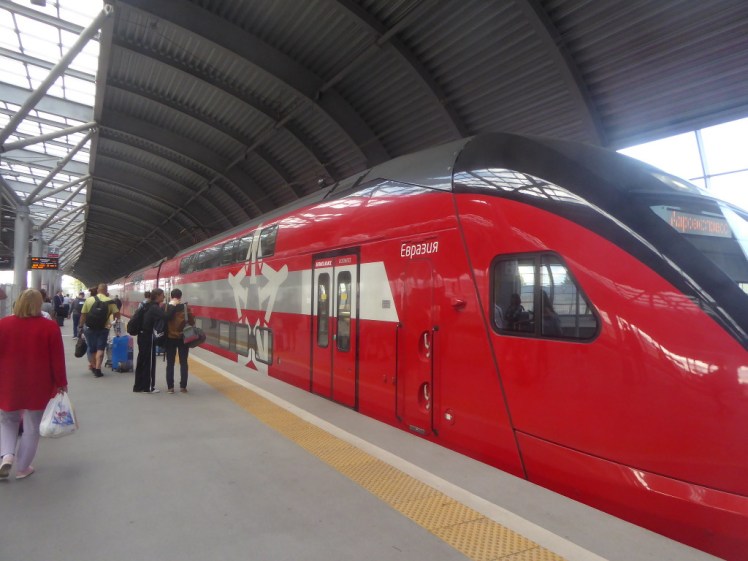
First of all, tickets. The Moscow metro uses smartcards like London’s Oyster cards. Even single-use single tickets are actually on smartcards. There’s no reason whatsoever why you can’t refill that card with a few more journeys or a virtual week/month pass or whatever.

But I’d read about something a bit more interesting. You can buy wearables. I know in London you can dig the chip out of your Oyster card and implant it into things – we all know about the man who put it in a magic wand – but TfL really disapproves of that. Oyster cards are only valid if they’re in the form of Oyster cards. Whereas the Moscow system not only sells its own interesting variants, it also approves and celebrates people innovating. One man has had his chip implanted in his hand and this made national news, with the tone of “What a hero!”. The official wearables are a bit less exciting than that but they’re still brilliant. You can buy silicone bracelets which come in 30-something colours or keyrings, which I have yet to spy, or ceramic rings. Yes, the rings are what caught my eye.
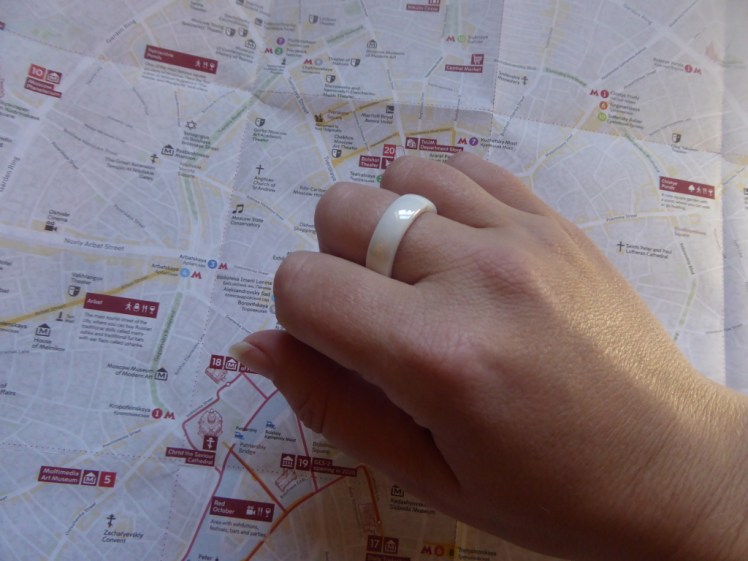
Isn’t this great? They come in black and pale pink too and there are versions with a bit of sparkle on them. You buy them from stands by the info desk at a big handful of stations but they’re past ticket control so you have to have a ticket first to get to buy them and the lovely people who work there don’t speak English so buying one mostly involves pointing and hoping for the best. I bought mine to fit my right third finger but it’s far too big. Fortunately, it fits my middle finger beautifully. I’d rather have had black but I take what I can get. Then you get given a tiny cardboard box which unfolds to reveal instructions and a special code which you can use to top it up online. Some idiot went home, dumped that on the bed and went out for the afternoon only to return to find it cleaned up and gone forever. Housekeeping were not allowed in my rooms at all for the rest of the duration of the trip – where they see junk, I see scrapbook gold and I’ve not forgiven them for binning my instructions and two used single tickets.
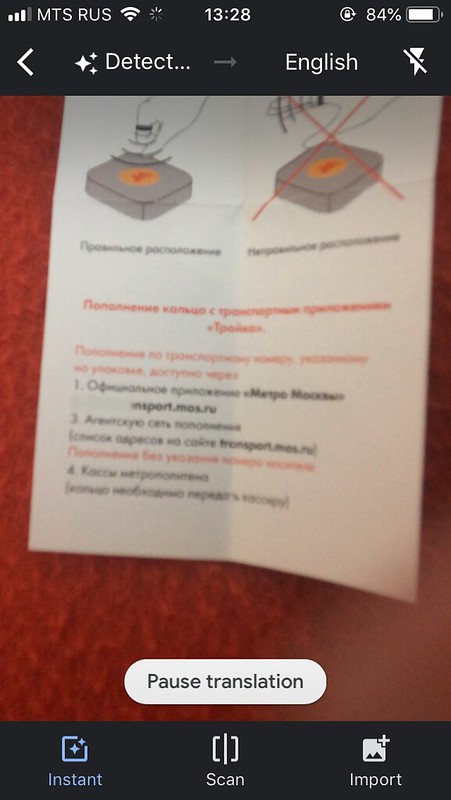
The plain cards can be topped up from machines (which speak English, it’s fine) but the rings, and presumably the bracelets and keyrings too, can only be topped up from the ticket desks. You can add various passes to a card but you can only add journeys to a ring, so my idea of a four-day pass was scuppered and instead I got ten journeys. I added another ten the day before I left and still have three or four left on it. There’s nothing quite like the glorious feeling of fistbumping the yellow ticket pad to open the underground world of Moscow to you. The magic comes out of the rings from the top and bottom so putting your hand flat on the pad only exposes the side of the ring and it doesn’t work.
As for the workings of the metro system, it was identical to the Kyiv metro. Same escalators with the same pillar lamps on the way down, same multi-keyboard direction signs at the bottom pointing you left or right, same LCD screens counting down from the last departure. Same transfer stations, where there’s a staircase leading up from the platform to the connecting station. In London, we’d consider them two different platforms for two different lines at the same station but the former-USSR definition of a station appears to be literally the platform the train departs from. It takes a while to get used to that, treating two or three stations as one. Wanting to travel on the green line but going to the red line station because you don’t even know where the above-ground entrance to the green line station is. Three stations that are pretty much just one station serving the entire Red Square/Kremlin area.

Navigating is no problem. There are maps on the walls of the trains and there’s either an LCD marquee telling you what station is next or a nice shiny new screen in the wall or a voice in both Russian and English or a combination so getting around is easy enough. There’s a brown circle line that intersects with pretty much every other line, which dive straight across Moscow – well, not straight, they wiggle around the centre but if you look at the lines that cross the brown line, where they cross it twice they do it in pretty much exactly the same order. I admit, I didn’t do all that much exploring of Moscow because I was there for three whole days and the Red Square/Kremlin area occupies most of that, but I found I didn’t really ever have to go further than two stops on any line ever.
It made me want to go to London with someone who knows nothing about the Tube to see how easy that is for a first-timer in comparison. I think it’s a lot less friendly to those who don’t speak the local language – the Moscow metro has fairly prominent English – or at least Latin character – signage and I’m pretty sure I saw some Chinese as well whereas I think the Tube operates exclusively in English. Are our multitudes of lines more confusing than Moscow’s? Does our Circle Line look as intimidating as theirs? Is it? One thing I noticed as I took the Tube back from Heathrow to Hounslow West to the car at the end of my odyssey is that Tube carriages are very small in comparison and you seem to wait a lot longer than I ever did in Moscow. No metal detectors, though.
Oh – in Moscow, you have to go through metal detectors to get into stations. To get into mainline stations you have to put your luggage through an x-ray machine. In Ekaterinburg, you have to do this every time you go on the metro too and that gets really old really quickly. What’s really tedious about it is that the metal detectors beep at pretty much everyone because we’re carrying cash and keys and phones and so the guards/police pay no attention whatsoever to it.
They say the Moscow metro is one of the most decorative in the world and I found it a little disappointing. I mean, some of them were nice, some had nice platforms, some had nice ticket halls and there’s certainly more decoration than London and a greater variety but the stations I saw didn’t quite live up to the hype. My own, Paveleyskaya, had a nice green mural round the top of the ticket hall and arches topped with bronze hammer-and-sickle sculptures. Teatralnaya has sculptures over the ceiling of assorted performers and performances. Ploschad Revolyutsii has bronze sculptures of various Soviet people – farmers, solders, that sort of thing. I’d heard that Park Pobedy was the deepest station with a huge escalator but that too was disappointing – my local station in Kyiv remains the longest escalator I’ve seen so far; deep enough that you can’t see the bottom from the top.
For future reference to myself, next time I do something like this I need to take a photo of the station name before I take pictures of the station itself so I don’t have to spend an hour with the guidebook and Google trying to figure out what station I’m looking at when I write the blog…
Anyway, enjoy this little gallery of the Moscow metro taken by a not-very-good-photographer while there are other people around getting in the way.

